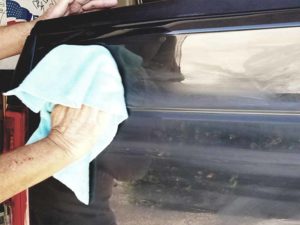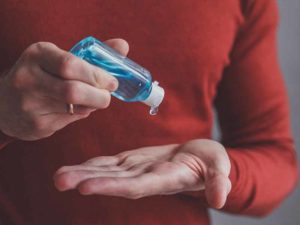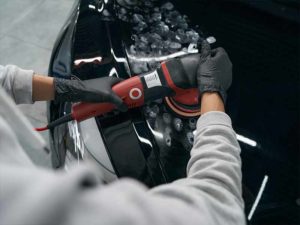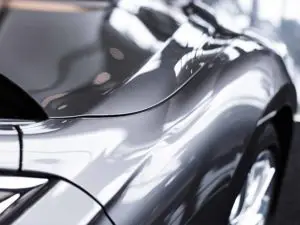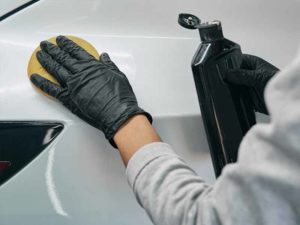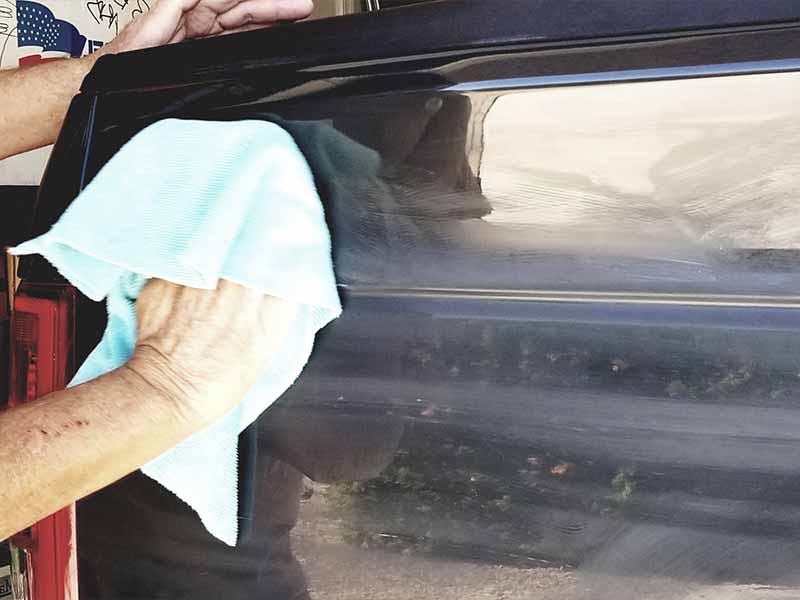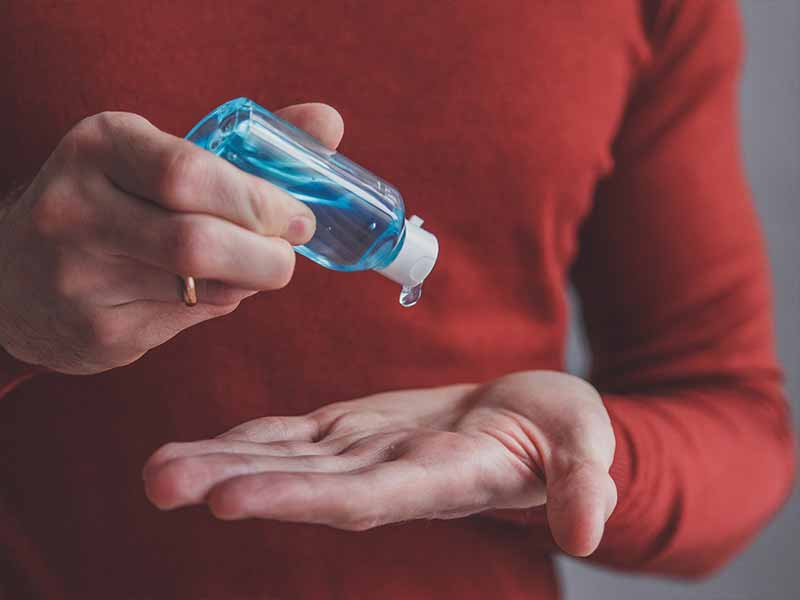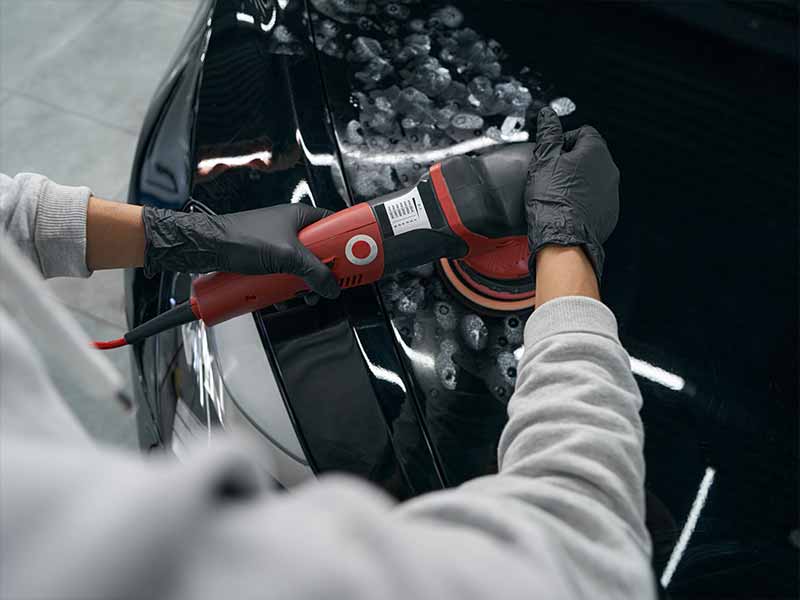Table of Contents
- Clear Coat Failure Vs Oxidation
- What Is Clear Coat Oxidation?
- What Does Oxidation Look Like on a Car?
- What Causes Oxidation on Car Paint?
- How Do You Remove Oxidation from Clear Coat?
- Will a Clay Bar Remove Oxidation?
- How to Prevent Oxidation on Car Paint?
- What Is Clear Coat Failure?
- Early Signs of Clear Coat Failure
- What Causes Clear Coat to Peel?
- How Long Does It Take for Clear Coat to Fail?
- How Do You Fix Clear Coat Failure?
- How Do You Stop Clear Coat from Failing?
- Helpful Links
- Conclusion
Whether it is your own vehicle or someone else’s, you have probably seen a vehicle that has not been properly taken care of. In other words, the vehicle’s paint has not held up well and doesn’t look the way it did when it was first purchased.
In all honesty, this is the way most vehicles are today, especially daily drivers. This is because these vehicles are exposed to the elements on a daily basis and are likely not well taken care of.
Clear Coat Failure Vs Oxidation
Clear coat oxidation is when the clear coat surface begins to become chalky white and rough. This is sun damage from ultraviolet radiation breaking down the coating.
Clear coat failure usually includes oxidation but is damaged to a point that is beyond being polished to restore and is typically peeling away from the color layer beneath.
It is said that the clear coat and paint of a vehicle can last the lifetime of a vehicle if it is well taken care of and protected. Unfortunately, most vehicle owners fail to take the proper steps to do this. These steps would include frequent car washes, protection from the sun and other elements, installation of ceramic coating, etc.
Failing to maintain the clear coat can result in its failure and oxidation. Keep reading to learn more about clear coat oxidation and clear coat failure, as well as the difference between the two.
What Is Clear Coat Oxidation?
Clear coat and paint oxidation can ultimately be referred to as skin cancer for cars. Oxidation is the result of environmental factors and pollutants like the ozone, acid rain, industrial pollutants, etc.
UV-B rays have been linked to the chemical modification of automobile paint leading to the loss of the clear coat, change in paint color, chalking, flaking, and deterioration of the paint film.
The oxidation process begins as a chemical reaction that results in the surface of the paint film overheating, drying out, and simply wearing down. This leaves the flaws and imperfections of the clear coat and paint vulnerable to deterioration from the elements.
What Does Oxidation Look Like on a Car?
The more that your vehicle’s clear coat and paint oxides, the more prominent the effects of the oxidation becomes.
At first, you will notice the paint becoming duller. Over time, the paint’s surface will begin to fade, leaving the paint colors less vibrant. If the oxidation is severe, then the paint will have a dull and chalky appearance to it.
The final stage of oxidation involves the deterioration of the clear coat, resulting in various patches of paint permanently dissolving. Unfortunately, once this happens, it leaves the whole car vulnerable to rust. It also means that the vehicle needs to be repainted to avoid further clear coat damage and harm to the structural components of the car.
What Causes Oxidation on Car Paint?
There are four main factors that play a role in clear coat and paint oxidation on an automobile.
UV Rays
Most people assume that direct sunlight is the main cause of paint oxidation. Although it is true that exposure to the sun can wreak havoc on your clear coat over an extended period of time, the invisible ultra-violet rays are what you must be concerned about instead of the heat.
UV light can penetrate the invisible clear coat and then begin to heat and weaken the pigmented paint beneath it. As this happens, the molecules in the clear coat and paint to relocate, which is what causes the paint color to start fading.
Waste Droppings
Bird waste, bug guts, tree sap, and other forms of organic waste pose a serious threat to the clear coat of your automobile. This waste can be incredibly unpleasant and usually unavoidable, which is why this is one of the most common causes of clear coat and paint oxidation.
Chemical Exposure
Mother Nature can wreak havoc on your vehicle’s clear coat, but so can a number of man-made chemicals and by-products. Unfortunately, many of these are completely unavoidable, just like animal and plant droppings.
From de-icing sprays and road salt to harsh cleaning chemicals, things that humans create can create billions of dollars in oxidation of the clear coat annually. Because of this, you should be utilizing a pH neutralizing shampoo and cleaning agent on the entire car.
Acid Rain
Acid rain is not as serious as it sounds. It is simply rainfall that is extremely acidic due to the pollutants in the air, which can lead to significant environmental harm to lakes, forests, and the clear coat and paint on your vehicle. Since it is rain, it is completely unavoidable unless you are going to avoid driving entirely.

How Do You Remove Oxidation from Clear Coat?
Although it is best to prevent oxidation from occurring, there are steps you can take to remove clear coat and paint oxidation before it has a chance to seriously harm your paintwork.
You should move your vehicle into a well-shaded area so the temperature is within the mid-70s. Next, clean the exterior of your vehicle completely so all the dust, dirt, and contaminants are removed. A clay bar can be used as well to help remove stuck-on contaminants and dead pieces of paint. Use a microfiber towel to dry it completely.
In order to begin the oxidation removal process, you will want to apply a thin layer of an oxidation removal product to the paint surface. Polishing compounds can be used for light-to-moderate oxidation, but a rubbing compound will need to be used for heavy oxidation.
It is best to use an electric polisher or buffer with a foam pad for polishing. Make sure to work in small areas and going side to side, working the compound into the paint and then removing it as quickly as possible with a clean microfiber cloth.
Repeat this process until you no longer see signs of oxidation. Depending on your results, you may need to increase or decrease the amount of pressure you are using on the vehicle with your polisher.
Finally, apply a layer of wax to your vehicle afterward to add an additional layer of protection, which will help prevent oxidation in the future.
Will a Clay Bar Remove Oxidation?
Contrary to popular belief, a clay bar cannot remove oxidation from a vehicle. Instead, a polishing compound should be used. However, a clay bar can be used prior to the oxidation polishing compound to clean the area for polishing and to improve the final finish.
How to Prevent Oxidation on Car Paint?
The most effective way to prevent the oxidation of car paint is to maintain the exterior of your vehicle. Therefore, this means you should wax your vehicle once per month, which will add an additional layer of protection for your paintwork against the elements and protect it against oxidation.
Further, when possible, you should keep your vehicle out of the elements, such as in a garage. You should invest in a car cover for when this is not possible and use it when your vehicle must be kept outside and exposed to the elements.

What Is Clear Coat Failure?
Clear coat failure occurs when the clear coat is essentially gone. Oxidation has occurred so severely that the clear coat has deteriorated away completely, or oxidation has occurred to the extent that the clear coat has begun to peel, bubble, or fall off.
Dependent on the circumstances surrounding the vehicle’s daily use, the vehicle’s paintwork condition, and how you care of the exterior of your vehicle, clear coat failure can occur relatively quickly or occur over a period of several years.
Early Signs of Clear Coat Failure
The early signs of clearcoat failure begin when clear coats begin looking faded and opaque-ish. Once the appearance of the clear coat changes, you will start to notice that the clear coat is beginning to flake, almost like dry skin or the car has a sunburn.
Unfortunately, you cannot reverse the effects of clear coat failure. However, you can slow down the effects of the problem by maintaining the exterior of your vehicle and keeping it out of the sunlight.

What Causes Clear Coat to Peel?
Generally, clear coats peel on older cars after they have been left sitting outside in the elements for some time. The reason a car’s clear coat peels is due to an insufficient bond to the underlying color coat of paint.
As the clear coat deteriorates and wears away, the lack of sufficient adhesion results in the clear coat around the damaged area starting to peel back. This begins a chain reaction on the exterior of your vehicle that requires repair as soon as possible to avoid further clear coat damage.
How Long Does It Take for Clear Coat to Fail?
The amount of time it takes for clear coats to fail varies from one vehicle to the next. This is due to the fact that every car owner takes care of their vehicle differently.
This process does not happen overnight, of course, and depending on a variety of factors, it can happen over a short period of time or a very long period of time. Factory automotive clear coats typically last somewhere between 10 and 15 years when properly cared for. Without proper maintenance, however, the clear coat can degrade and fail after just a few years.

How Do You Fix Clear Coat Failure?
One thing to understand is that you cannot simply head to your local auto detailing service and expect for clear coat failure to be fixed. Although professional detailing of your vehicle may improve the appearance of your vehicle and hide the issue temporarily, the most effective way for clearcoat failure to be repaired is to have a professional local body shop re paint the entire panel.
In the event that you are only dealing with a very small area of clear coat failure because you caught the issue early on before it spread, you may be able to quickly and easily fix the peeling clear coat on your own.
Here is a brief look at what you can do to fix clear coat failure yourself:
- Wash and dry the vehicle completely, especially the panel you will be working on.
- Apply masking tape to cover the panels adjacent to the one you will be respraying.
- Using an automotive Scotch Brite with light to medium pressure, rub down the damaged areas to remove the peeling flakes of clear coat. Fine-grit sandpaper can also be used, but never use a razor blade.
- Once all the dead paint has been removed and you’ve finished scuffing the damaged area, a blend zone needs to be created at least three to four inches in each direction. This ensures the new clear coat has something to adhere to.
- Rinse the area with water, and then wipe down with a tack cloth or isopropyl alcohol to ensure all dust and dirt has been completely removed. Allow to dry completely.
- Use newspapers, masking sheets, paper towels, plastic foil, or the like to cover the adjacent panels to avoid overspray.
- Read and follow the manufacturer’s instructions for whichever of the clearcoat paints you have purchased. Make sure to wear your respirator or mask as you apply it.
- Spray several coats of the clear coat, with a 10-minute flash time between each one. Leave the car to dry overnight.
- The final step is to remove the masking paper, wet sand the entire area, and then polish the edges.
How Do You Stop Clear Coat from Failing?
The best way to stop your clear coat from failing is to park your vehicle in the shade—or at the very least avoid leaving your vehicle in direct sunlight all day or for extended periods of time.
You should also ensure your vehicle always has that extra layer of protection on it (wax) and gets detailed regularly to remove animal and plant waste, contaminants, environmental pollutants, and water spots from the paint surface.
Another effective way to avoid clearcoat failure is to have a ceramic coating professionally installed and properly maintain it afterward, which will help protect the paint.
Helpful Links
Conclusion
Equipped with the aforementioned information, you now know what both clear coat oxidation and clear coat failure are, how to identify them, how to prevent them, and more. Moving forward, it is our hope that this information will help you maintain the gloss and shine of your vehicle for many years to come.
